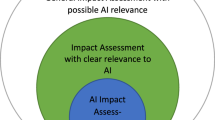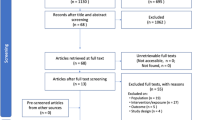Abstract
Background, aim, and scope
This paper summarises the critical review process according to ISO 14040/44 performed for the European Aluminium Association (EAA), Brussels. Scope of the review was a life cycle inventory (LCI) project, aiming at providing the life cycle assessment (LCA) community with reliable generic data relevant for the European aluminium market, including the production of aluminium ingot either from primary aluminium or from recycled aluminium and the fabrication of semi-finished products, i.e. sheet, foil or extrusion fabrication from aluminium ingots.
Main features
Critical reviewing according to ISO 14040 and 14044, although described formally in the standards, evolved essentially via ‘learning by doing’. This special review has been conducted as a critical review by one external expert. Since no comparative assertions are to be expected from the results obtained, a critical review according to the panel method (at least three reviewers) was deemed not to be necessary. The review process was interactive and took about a year (March 2007 to April 2008). The full review report is printed in full length at the end of the published LCI data report.
Results
The report continues the tradition of the former reports but offers new aspects. The main change refers to the use of new software for data handling (GaBi 4.0 replacing the formerly used LCA-2 based on BUWAL data), including generic data for ancillary processes and inputs for the energy model. The LCI results, therefore, cannot be compared exactly with the data of the previous reports. There is no disconnection, however, so that trends can be observed and discussed with some precaution. The main trend with respect to energy and emissions is one of slow but steady improvement. A main methodological improvement with regard to the former projects is the new energy model, especially with regard to imported primary aluminium.
Discussion
There was some discussion about the term ‘waste’ when it is put outside the system boundary together with the resulting emissions. According to the author’s opinion, there are at least three types of waste: (1) waste to be reused or recycled—this waste stays within the technosphere and, thus, within the system boundaries of a typical LCA; (2) waste to be collected and removed legally by incineration, controlled landfilling or composting—this waste stays within the technosphere, too; only the emissions of the waste removal processes (CO2, CH4, organic contaminants to ground water, leached metal ions to ground water, etc.) escape into the environment if not collected properly; (3) waste thrown away, e.g. by littering, illegal dumping, burning, etc.; this waste ends up in the environment if not collected. There was a time when solid waste in LCA (if landfilled) was considered as an ‘emission into soil’. This is only true for illegal, uncontrolled land filling. Controlled landfilling is a kind of process and belongs to the technosphere as long as it is controlled. EAA envisages to include appropriate data in future updates (incineration is already included).
Conclusions
According to ISO 14040, “The critical review process shall ensure that: the methods used to carry out the LCA are consistent with the international Standard; the methods used to carry out the LCA are scientifically and technically valid, the data used are appropriate and reasonable in relation to the goal of the study; the interpretations reflect the limitations identified and the goal of the study; the study report is transparent and consistent.” These five points can be confirmed with a few restrictions. With regard to the first item, consistency with ISO 14040/44, there is a formal lack of a section ‘interpretation’. It was also discussed that the study is not a full LCA, but the standard allows for LCI studies. As such, the study conforms to ISO. The methods used in data collection and modelling are described clearly and correspond to the state of the art. They should be published and become standard for generic data collection.
Perspectives
It is assumed and recommended that the process of continuous improvement (both technological and relating to data collection and modelling) will continue in the following years. However, since raw aluminium production is faced with thermodynamic limits, it is proposed to rethink the whole aluminium system, which is based on a century-old technology and to conceive bold new routes, especially aiming at a further increase of renewable energy use and further improving recycling in countries with deficient waste collecting systems. The use of heavy fuel oil in alumina production should be discouraged.
Similar content being viewed by others
References
Bertram M, Buxmann K, Furrer P (2009) Analysis of greenhouse gas emissions related to aluminium transport applications. Int J Life Cycle Assess 14(special issue 1). doi:10.1007/s11367-008-0058-0
Boin UMJ, Bertram M (2005) Melting standardized aluminum scrap: a mass balance model for Europe. JOM 57(8):26–33
Boustead I (1996) LCA—How it came about. The beginning in UK. Int J Life Cycle Assess 1(3):147–150
Boustead I, Hancock GF (1979) Handbook of industrial energy analysis. Horwood, Chichester, UK
Ciroth A (2004) Uncertainty in life cycle assessments. Int J Life Cycle Assess 9(3):141–142
Ciroth A (2008) Fehlerrechnung in Ökobilanzen: Effiziente Kombination von Näherungsverfahren und Simulation. Vdm Verlag Dr. Müller (ISBN: 978-3836475136)
Declaration by the Metals Industry on Recycling Principles (2007) Int J Life Cycle Assess 12(1):59–60. doi:http://dx.doi.org/10.1065/lca2006.11.283
EAA (European Aluminium Association) (2000) Environmental profile report for the European aluminium industry. EAA, Brussels
EAA (European Aluminium Association) (2005) Environmental profile report for the European Aluminium Industry. Primary aluminium update—Year 2002; semi-finished aluminium products and process scrap recycling update—Year 2002; aluminium recycling in LCA. EAA, Brussels
EAA (European Aluminium Association) (2008) Environmental profile report for the European Aluminium Industry. Life Cycle Inventory data for aluminium production and transformation processes in Europe. Brussels, April 2008, 72 + 12 pp
Fava J, Pomper S (1997) Life-cycle critical review! Does it work? Implementing a critical review process as a key element of the aluminium beverage container LCA. Int J Life Cycle Assess 2(3):144–153
Frees N (2008) Crediting aluminium recycling in LCA by demand or by disposal. Int J Life Cycle Assess 13(3):212–218
Gatti JB, de Casthilo Quieroz G, Corrêa Garcia EE (2008) Recycling of aluminium can in terms of life cycle inventory (LCI). Int J Life Cycle Assess 13(3):219–225
Guinée JB, Heijungs R, Huppes G (2004) Economic allocation: examples and derived decision tree. Int J Life Cycle Assess 9(1):23–33
Heijungs R, Frischknecht R (2005) Representing statistical distributions for uncertain parameters in LCA. Relationships between mathematical forms, their representation in EcoSpold, and their representation in CMLCA. Int J Life Cycle Assess 10(4):248–254
Hunkeler D (2006) Societal LCA methodology and case study. Int J Life Cycle Assess 11(6):371–382
Hunkeler D, Lichtenvort K, Rebitzer G (2008) Environmental life cycle costing. CRC, Boca Raton, Florida
International Standard (ISO) (2006a) Environmental management—life cycle assessment: principles and framework. ISO 14040
International Standard (ISO) (2006b) Environmental management—life cycle assessment: requirements and guidelines. ISO 14044
International Standard Organisation (1997–2000) Environmental management—life cycle assessment ISO 14040-14043
Jørgensen A, Le Bocq A, Nazarkina L, Hauschild M (2008) Methodologies for social life cycle assessment. Int J Life Cycle Assess 13(2):96–103
Klöpffer W (1997a) In defence of the cumulative energy demand. Int J Life Cycle Assess 2(2):61
Klöpffer W (1997b) Peer (expert) review according to SETAC and ISO 14040. Theory and practice. Int J Life Cycle Assess 2(4):183–184
Klöpffer W (2005) The critical review process according to ISO 14040–43: an analysis of the standards and experiences gained in their application. Int J Life Cycle Assess 10(2):98–102
Klöpffer W (2006) The role of SETAC in the development of LCA. Int J Life Cycle Assess 11(Special Issue 1):116–122
Klöpffer W (2008a) Critical review report. In: Environmental profile report for the European Aluminium Industry. Life cycle inventory data for aluminium production and transformation processes in Europe. European Aluminium Association (EAA), Brussels, April 2008, p 12
Klöpffer W (2008b) Life cycle sustainability assessment of products. Int J Life Cycle Assess 13(2):89–94
Leroy C (2009) Provision of LCI data in the European aluminium industry: methods and examples. Int J Life Cycle Assess 14(special issue 1). doi:10.1007/s11367-009-0068-6
Milà i Canals L, Bauer C, Depestele J, Dubreuil A, Freiermuth Knuchel R, Gaillard G, Michelsen O, Müller-Wenk R, Rydgren B (2007) Key elements in a framework for land use impact assessment within LCA. Int J Life Cycle Assess 12(1):5–15
SETAC (Society of Environmental Toxicology and Chemistry) (1993) Guidelines for life-cycle assessment: a ‘code of practice’. In: SETAC Workshop, Sesimbra, Portugal, 31 March–3 April 1993, 1st edn, Brussels and Pensacola (Florida), August 1993
SETAC (Society of Environmental Toxicology and Chemistry) (2008) Life cycle costing, a code of practice. Presented by Hunkeler D 5th SETAC World Congress, Sydney
VDI 4600 (1997) Kumulierter Energieaufwand (Cumulative Energy Demand). German and English. VDI-Gesellschaft Energietechnik Richtlinienausschuß Kumulierter Energieaufwand, Düsseldorf
Werner F, Richter K (2000) Economic allocation in LCA. A case study about aluminium window frames. Int J Life Cycle Assess 5(2):79–83
Acknowledgement
My thanks are due to Christian Leroy and Jörg Schäfer (both EAA), to Bernard de Gélas (expert consultant, Paris) and to Marlen Bertram (IAI, formerly OEA) for the good co-operation during the critical review.
Author information
Authors and Affiliations
Corresponding author
Additional information
Responsible editor: Gerald Rebitzer and Jörg Schäfer
Special Issue “Life Cycle Performance of Aluminium Applications”
Rights and permissions
About this article
Cite this article
Klöpffer, W. Experiences with the critical review process of aluminium LCI data. Int J Life Cycle Assess 14 (Suppl 1), 45–51 (2009). https://doi.org/10.1007/s11367-009-0069-5
Received:
Accepted:
Published:
Issue Date:
DOI: https://doi.org/10.1007/s11367-009-0069-5




